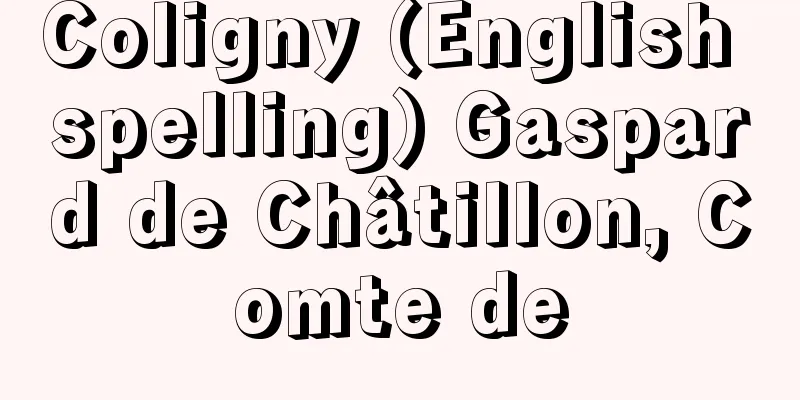Emperor Ogimachi

|
Year of death: Bunroku 2.1.5 (1593.2.6) Year of birth: May 29, 1517 (June 18, 1517) An emperor during the Sengoku and Azuchi-Momoyama periods (reigned 1557-86). The second son of Emperor Gonara. His given name was Hojin. His mother was Eishi, the daughter of councillor Manrikōji Masafusa. In December 1533, he was proclaimed prince and had his coming-of-age ceremony. In October 1557, he ascended to the throne after his father's death. Funeral expenses were collected by Miyoshi Nagayoshi through a tax levy in Kyoto, but the remains were left unattended for over two months, giving the impression of being a royal misdeed. The enthronement ceremony was expected to be difficult due to lack of funds, but in February 1559, the emperor asked Mori Motonari, lord of Aki Yoshida Castle, for a donation, and in April of the same year, Motonari donated 2,000 kan of coins, and the enthronement ceremony was held in May of the following year. The Mori clan took pride in this donation, and when they pacified Bitchu the month after the donation, they reported that "the Emperor has requested his accession to the throne, and so we have won this extraordinary victory." This suggests that the daimyo had a centripetal force towards the Emperor. Traditionally, it was thought that there was no political relationship between the daimyo and the Emperor, but Masagimachi demonstrated remarkable political power by granting Imagawa Yoshimoto imperial permission to become the Governor of Mikawa, and issuing an imperial decree to Oda Nobunaga in November of the same year encouraging future military action. After Nobunaga entered Kyoto, there were incidents of conflict over issues of Christianity and the temple monk's land, but the relationship between the two was generally good, and progress was made in repairing the Imperial Palace and restoring the court ceremonies. When Nobunaga went on campaigns, he prayed for victory and acted as Nobunaga's faithful priest by dispatching imperial envoys to the battlefields. He also issued imperial orders to save Nobunaga from difficult situations when he made peace with Eno-Echigo (Omi, Mino, Echizen) in 1570 and when he made peace with Ashikaga Yoshiaki in 1573. However, in 1574, there was a conflict over the appointment of the head priest of Kofuku-ji Temple. He was placed under house arrest, and Nobunaga came to detest Masagicho. He wanted his son, Prince Masahito, to abdicate, and repeatedly requested this, but the cunning Emperor refused. After the Takeda campaign in 1577, Nobunaga requested Masagicho and received imperial permission to appoint him as Shogun, but this did not come to fruition. His successor, Hashiba (Toyotomi) Hideyoshi, chose to become Kanpaku after the defeat at Nagakute, and he also received imperial permission. He had a good relationship with Hideyoshi, who was a loyal imperial vassal. It is believed that the decision by Goyozei to stop Hideyoshi from crossing the sea in the autumn of 1592 (Bunroku 1) was made at the will of the retired emperor, Masaaki Masaaki. He is important as an emperor who survived the vicissitudes of the Warring States period and maintained the authority of the imperial family. (Akira Imaya) Source: Asahi Japanese Historical Biography: Asahi Shimbun Publications Inc. About Asahi Japanese Historical Biography |
|
没年:文禄2.1.5(1593.2.6) 生年:永正14.5.29(1517.6.18) 戦国・安土桃山時代の天皇(在位1557~86)。後奈良天皇の第2皇子。諱は方仁。母は参議万里小路賢房の娘栄子。天文2(1533)年12月親王宣下,元服。弘治3(1557)年10月父天皇の没を受けて践祚。葬礼費は三好長慶が洛中棟別を課して徴収したが,遺骸放置2カ月余りにおよび,いわゆる皇室式微を印象づけた。即位礼も財源難で難航が予想されたが,永禄2(1559)年2月天皇は安芸吉田城主毛利元就に献金を依頼,同4月元就は銭2000貫を献じ,翌年5月即位礼が挙行された。毛利氏はこの献金を自負し,献上翌月に備中を平定した際には「御即位申沙汰仕り候によりて奇特に切り勝ちたり」と奏した。大名の意識に天皇への求心性があったと思われる。従来大名と天皇の間に政治性はないとみられていたが,正親町は今川義元に三河守を勅許し,織田信長には同10年11月に今後の軍事行動を鼓舞する綸旨を出すなど,注目すべき政治力を発揮している。 信長入京後はキリシタンや山門領の問題で対立する事件もあったが,両者の関係はおおむね良好で内裏修理,朝儀復興が進んだ。信長の出征に当たっては戦勝祈願を行い,戦地に勅使を派遣するなど信長の忠実な司祭として行動,また元亀1(1570)年の江濃越(近江,美濃,越前)一和,天正1(1573)年の足利義昭との和睦に際しては勅命を出して信長の窮地を救っている。しかし同4年興福寺別当の人事を巡り対立。伝奏蟄居という処分者を出し,以後信長は正親町を忌み嫌い,皇子誠仁親王への譲位を望んでたびたびこれを要請したが老獪な天皇は拒否を貫いた。同10年の武田征討後,信長の要請を認めて将軍任官を勅許したが実現せず,その後を継いだ羽柴(豊臣)秀吉は長久手の敗戦により関白就任の途を選び,これも勅許した。尊皇家秀吉との間は良好であった。文禄1(1592)年秋の後陽成による秀吉の渡海諭止は当時上皇であった正親町の意志とみられる。戦国の転変の世を生き抜き,皇家の権威を維持した天皇として重要。 (今谷明) 出典 朝日日本歴史人物事典:(株)朝日新聞出版朝日日本歴史人物事典について 情報 |
>>: Ogimachi Public Street - Ogimachi Public Street
Recommend
Strassburg
…Population: 256,000 (1990). German name: Strassb...
Calvin Cycle - Calvin Cycle
The reduced pentose phosphate cycle, also known as...
Kadono-ryu
The name of a school of Noh performers of the o-ts...
Za-yao; tsa-yao
A type of labor service in China. It appeared in t...
Viburnum japonicum (English spelling)
…[Mr. Makoto Fukuoka]. … *Some of the terminology...
Dark Ages
…He was a pioneer in the field of medieval poetry...
Pakistan - Pakistan (English spelling)
A country in the northwest of the Indian subconti...
Job - Job
[1] 〘 noun 〙① A position or job in which one is re...
Reed - Reed
A weaving attachment. It is a comb-shaped structur...
Eaves - eaves
Today, the term eaves refers to a lean-to roof use...
quasi-stellar galaxy
…They are also called quasars, quasi-stellar obje...
In-hospital relief - In-hospital relief
…Residential care is a method by which people who...
Yokoi Chiaki
1738-1801 A Japanese classicist from the mid to l...
Conchorus olitorius (English spelling)
…【Hoshikawa Kiyochika】. … *Some of the terminolog...
Kermenchik
…In the 4th and 3rd centuries BC, it flourished a...









